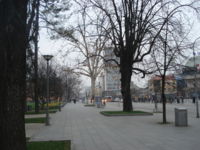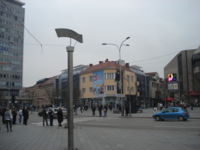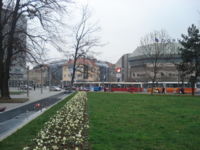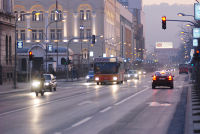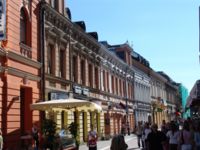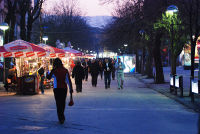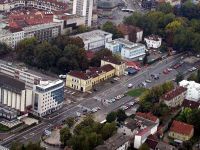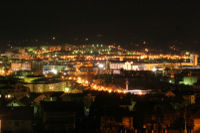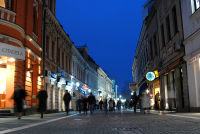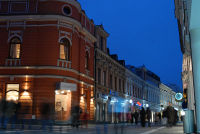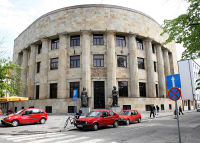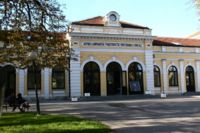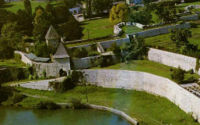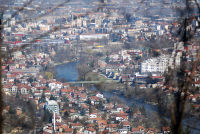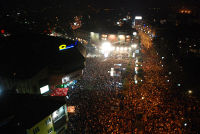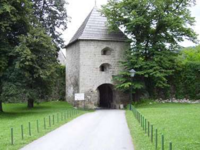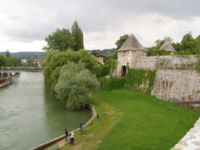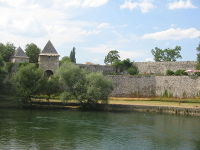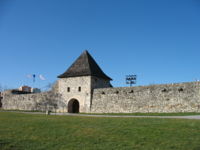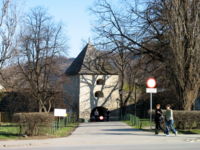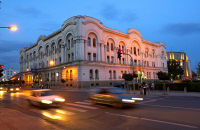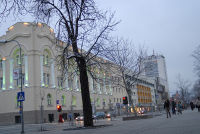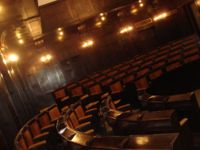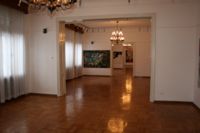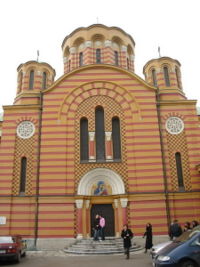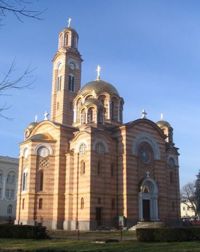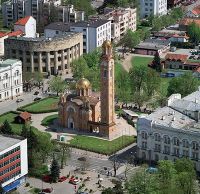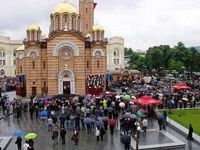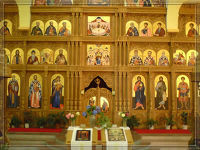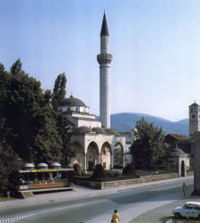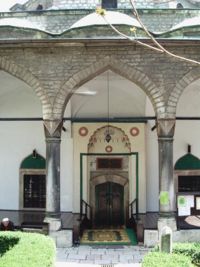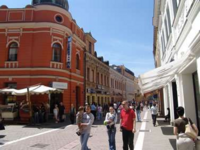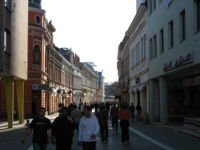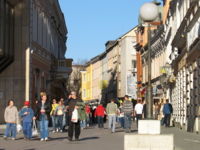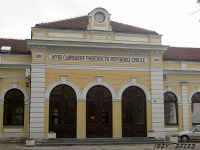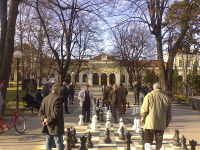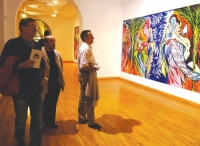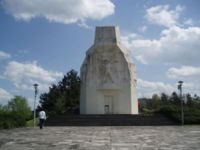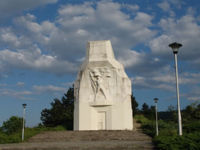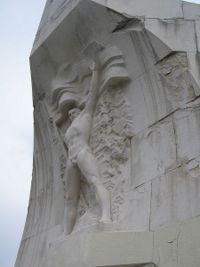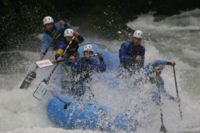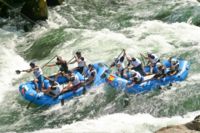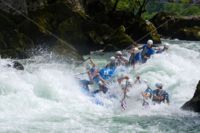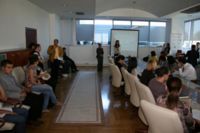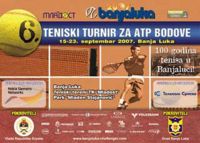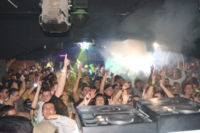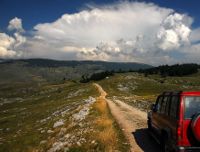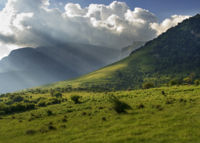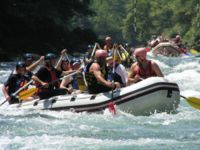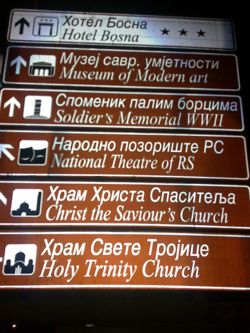DebConf11/BanjaLuka/Banja Luka (city)
• DebConf11 Bosnia • Local Team • Accommodation • Banja Luka • Republic of Srpska
Contents |
[edit] City of Banja Luka
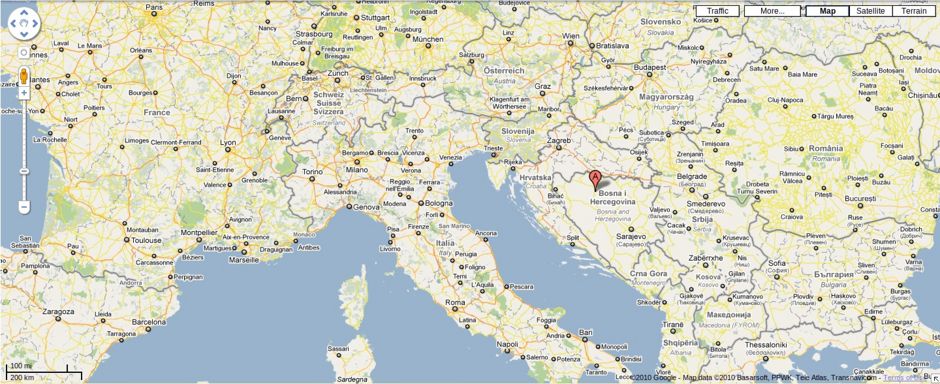
|
Banja Luka on Google Maps Banja Luka on OpenStreetMap
Banja Luka is the second largest city in Bosnia and Herzegovina, and the largest and most developed city in Republika Srpska, with about 270.000 inhabitants. It is home of the University of Banja Luka, as well as numerous state and entity institutions of Bosnia and Herzegovina. The city lies on the Vrbas river, and is rich with tree-lined avenues, boulevards, gardens, and parks. City has a long history dating before the time of the Romans; archaeological evidences tells of a rich culture of its inhabitants.
Banja Luka is located in the north-west part of Bosnia and Herzegovina and is surrounded with hills, woodlands and mountains, but the city itself lies in the valley of the same name. Banja Luka has a continental climate, with harsh winters and warm summers.
[edit] Short History
The known history begins with the Romans, who conquered these territories in the first few centuries AD. They settled in there centre of today's city, where they build old fort Castra, turning the city into a strong administrative and military centre. After the fall of the Roman Empire, the Romans abandoned these territories. In the following VI. and VII. century Slavic people settled in the area. In the year 1528. Banja Luka was conquered by the Ottoman Empire, and the occupation lasted for four centuries. During the Ottoman rule in Bosnia, Banja Luka was made the seat of the Bosnian pashaluk and most of the main roads and the city core was built during that period. In those four centuries Banja Luka made enormous progress in fields of culture and technology. By a decision from the Congress of Berlin, held in 1878. Bosnia and Herzegovina was placed under Austro-Hungarian administration. Their short time of rule is significant for the further advance of urbanization. Railroads, new schools and new factories were build, which improved the infrastructure, changing Banja Luka into a modern city. Austro-Hungarian rule has ended in the year 1918. Right after the World War I, Banja Luka became the capital of the Vrbas Banovina, a province of the Kingdom of Yugoslavia, ruled by Svetislav Milosavljevic. In this period city's most beautiful buildings and monuments were built: Banski dvor and it's twin sister, the Administration building, the Church of the Holy Trinity, theatre and museum, Grammar school was renovated, Teachers College enlarged, city bridge was also built and the park renovated. After World Word II, Banja Luka continues it's improvement and development, and many modern skyscrapers were built. Great tragedy befell the city in the year 1969. when the city was struck by two devastating earthquakes, but with contributions from all over Yugoslavia, Banja Luka was repaired and rebuilt. During the Bosnian war, progress stagnated as the whole country was engulfed in battle for Independence. Only after the war did Banja Luka's further development continued, as the cultural and financial centre of Republika Srpska.
[edit] Important locations and monuments
[edit] Castra/Kestel (Fortress)
The most beautiful cultural heritage site is the fortress Kastel; built by Ancient Romans and fortified by Ottomans, it is settled next to the green Vrbas River. It's the oldest monument of this city located in town centre and is very rich with archaeological findings. Other than Roman, evidence of other cultures were found, dating before the Roman Empire occupation. It was a strong military fortress used for defence of the city. It was later occupied by Ottomans, and it was a great strategical advantage during Ottoman - Austro-Hungarian wars.
[edit] Culture Centre Banski dvor
KU "Banski Dvor - Center of Culture" - built in the 1930s as a spot of residence for the Bans of the Vrbas Banovina. It is a representative building in the very centre of the city. The National Assembly is inside, along with a concert hall, gallery, state television, and a restaurant. Most of the main cultural and political leadership nowadays takes place inside of the building.
[edit] Church of Holy Trinity
The original Banja Luka Cathedral, called the Church of the Holy Trinity, was built between the two World Wars in down-town Banja Luka, and was later razed to the ground. For more than half a century after the Second World War, many new buildings were built in Banja Luka. The city authorities, however, would not allow the reconstruction of the destroyed Cathedral. Not long after the war, a monument to fallen soldiers was erected on the very spot where the Cathedral had been. At the beginning of the 1990’s, the Diocese of Banja Luka obtained permission to rebuild the Cathedral, and the war memorial was moved to a nearby location. The rebuilding of the Cathedral began in 1993 with the blessing of the grounds. The Cathedral was rebuilt under the name The Cathedral of Christ the Saviour, because between 1963 and 1969, another cathedral had been built under the name Church of the Holy Trinity.
[edit] Ferhadija (Mosque)
Ferhadija Mosque, was a central building in the city of Banja Luka and one of the greatest achievements of Bosnia and Herzegovina’s 16th century Ottoman and Islamic architecture. Commissioned by the Bosnian Sanjak-bey Ferhat-paša Sokolović, the mosque was built in 1579. The mosque complex included three small adjacent mausoleums containing the tombs of Ferhat-paša Sokolović, his granddaughter Safi-kaduna, and his ensign; also a central fountain – the Shaderwan (stone) Fountain – with a smaller fountain at the corner of a wrought iron fence; and a cemetery. Later a Sahat-Kula (clock tower) was added.
[edit] Gospodska Ulica (Street)
The name of the street comes from a trader who unofficially named it "Lords Street". Many stores, coffee shops and business centres are situated there, and it is located near The City Hall. Real name was given after a revolutionist Veselin Masleša, after World War II.
[edit] Museum of contemporary art
Primarily built as a train station, it was later turned into a museum. It is always open, with active exhibits from both national and international authors.
[edit] Spomenik na Banj-brdu (Monument)
Monument dedicated to our fighters who died during World War II. It is located on Banj-brdo hill and represent one of the largest mausoleums ever build in Yugoslavia, build by Antun Augustinčić.
[edit] Events
Banja Luka has hosted many national and international contests. In 2005. the European rafting championships "Banja Luka 2005 Vrbas" was held, and every year after the Euro Cup in rafting is held on Vrbas. Traditional Challenger tournament "Banja Luka open" held in September, attracts many tennis players from around the world. The city is host to many conferences at the national and international level. Festivals, concerts, exhibitions, performances, promotions and other will surely make your stay interesting.
In Banja Luka and its surroundings, during the whole year a number of traditional events of different nature are held; some of those are: Fashion Fest (March), Banja Luka Precentor ceremony (April-May); Kozarački etno (June-July); Rafting on the Vrbas River Regatta (August); Summer on the Vrbas (July); Euro cup in rafting (July), Banja Luka Summer Festival (June-July-August); Days Folklore (July-August); Kočićev zbor Association (August); ATP Challenger tennis tournament (September); Fashion Days (October-November); International open chess tournament (November-December); Back village (year round), and many others.
[edit] Tourism
The best way to experience the nature of Banja Luka and the surrounding area is the adventure itself! City is completely surrounded by woodlands, hills, mountains and rivers, which gives you a plethora of options to entertain yourself. You can camp in nature, enjoy rafting, kayaking, mountain climbing, hiking, cycling and a lot more of the outdoor activities. Experienced rafting skippers and Vrbas river, which meets all World Rafting Federation conditions for organizing rafting competitions in all disciplines, will provide you with an unforgettable adventure. Pedestrian routes that lead to many sites are a great opportunity to get to know the environment of Banja Luka.
[edit] Tourist Signalization
Getting around the town will never be more easy for the tourists! 'Tourist signalization' project has made tourist signs on every major street crossing in town, pointing to local tourist attractions, archaeological sites and cultural assets.
[edit] Tourist Guides/Trips
City Tour (walking route)
Kastel Fortress - Museum of RS - Krajina Square - Gospodska Street - Banska Palace - National Theater of the RS - Church of the Holy Trinity - Banja Luka Bishopric - RS Government building - hotel Bosna - Museum of Contemporary Art RS.
Duration: 90 minutes
City Tur (bus route)
Museum of Contemporary Art RS - RS Government - Imperial drum - Banja Luka metropolis and the Church of the Holy Trinity - Borik Sports Center - University - Industrial Zone - Obilićevo - fort Kastel - Krajina Square - Banski dvor - Museum of Contemporary Art RS.
Duration: 120 minutes
City Tour (walking and bus routes)
Museum of Contemporary Art RS - The RS - Imperial drum - National Theatre of RS - Banja Luka metropolis and the Church of the Holy Trinity - Borik Sports Center - University City - Industrial Zone - Delibašino Village (Trappists) - Banja Luka brewery - Obilićevo - a monument to the fallen hero at Banj-brdo hill - Fortress Kastel - Museum of RS - Krajina Square - Gospodska Street - Banska court.
Duration: 180 minutes
Religious facilities (walking and bus routes)
Church of Christ the Savior - Banja Luka Bishopric and Bonaventure Church - Church of the Holy Trinity and Banja Luka
metropolis - Petrićevačka Church - Monastery of Mary Star - Jama Mosque - Ferhadija.
Duration: 120 minutes
[edit] Trips and tours
- Krupa on Vrbas (waterfalls, mills and river sources Krupa Monastery of St. Elijah, log cabin church, medieval cities and Zvečaj Reef, national cuisine)
- Banja (Serbian spa, Slatina, Earthquakes)
- NP Kozara (monumental complex, museum, walk)
- Religious buildings in the vicinity (the Monastery of St. Ilija, Gomionica monastery, the monastery of Mary Star, the church
log cabin in Mali Blasko, the Italian church of St. Francis of Assisi, Ukrainian church in Devetini).
Services of sightseeing and tours are provided by the Guide service of the city.
Place and time of departure: on request (groups must announce themselves no later than 24 hours before departure)
Contact: +387 (51) 232760, Guide service of Banja Luka
